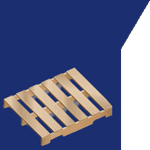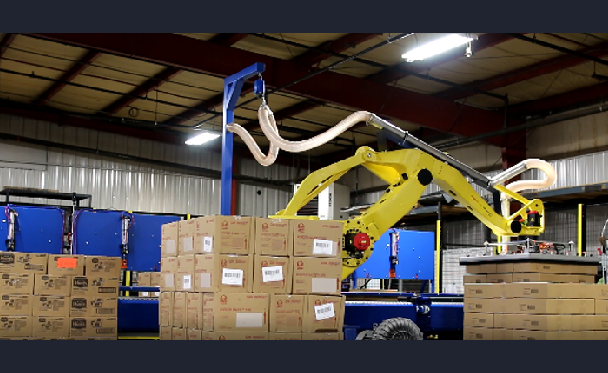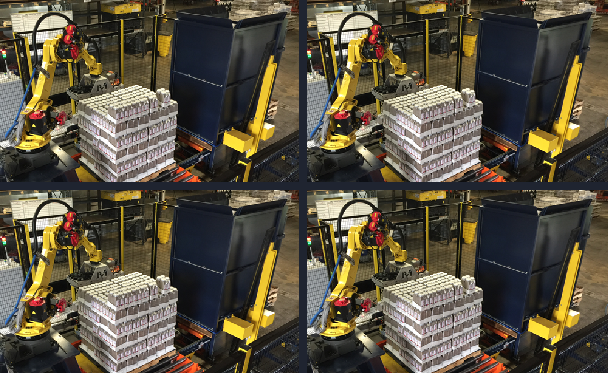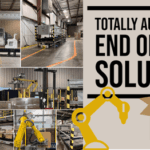When you start down the road of integrating a robot system into your facility – it is a give and take of information. First, you start by collecting some starter information about your current process and needs to share with each of the selected integrators. We have developed a quick one pager to get you started in gathering the correct information about your upcoming project – just download the document to the right for more information.

Is there more than one solution to developing a robot system for palletizing?
Once you start getting your quotes back from your selected integrators, you will notice that not all the solutions look the same. At this point your decision process gets a little tougher.
Part of what you need to realize when you gather multiple quotes from integrators is that each integrator may give you a different solution. Further, the integrators may have based the solution on what they have more experience building or they may have used information you shared during the initial quote phase.
As with any decision, it is important to look at the pros and cons of each of the systems quoted to make sure you get the one best fit for your facilty.
 Palletizing Example – What is the right palletizer for my product mix, rate, and throughput?
Palletizing Example – What is the right palletizer for my product mix, rate, and throughput?
Let’s look at an example where a customer needs to palletize multiple SKUs.
The system will need 4 lines to accommodate product mix and SKU count. Here is a quick description of two options you can select.
Taking these two systems into account, you develop the pros and cons list to decide which system works best for your facility and strengths.

Robot System #1 – Four Line Palletizer (one robot with 4 pallet stations)
Your first option is a four-line palletizer with one, high payload palletizing robot using a full layer Vacuum Gripper that picks full layers of product from a build station. The build station incorporates layer building to accommodate different case sizes of the SKUs as well as shifting case orientation between layers. This robot system has 4 pallet stations where full layers of product are placed by the robot. Once the pallet is finished it is transferred out of the cell and can be removed by a transfer car to a different location. A new pallet enters and is conveyed to the pallet build station.
✅ Pros
- Up to Four SKUs per Robot for each production run
- Higher Case Rates per Robot
- Fewer Robots, Less Maintenance
- Smaller Footprint for Same Number of SKUs
- Overall Lower Cost for Same
- Higher SKU Count
❌ Cons
- More Custom Design
- More Expensive End of Arm Tool for Full Layer Handling
- Requires Layer Building on Case Infeed, Prior to Robot Pick
- Throughput per SKU Limited by Build Table
- Build Table Adds Complexity to Palletizing Operation

Robot System #2 – Four Robots Running Single Line Palletizers
Your second option is to incorporate four, single-line cells side by side. These cells act as separate systems and can be used as needed to accommodate the production schedule. Each of the 4 robot cells contains a light payload palletizing robot with sectioned vacuum gripper. The systems convey product into the cell to be picked and placed as needed from single case to rows. When the pallet is finished, it is moved to the exit conveyor and can be picked up by a fork truck or transfer car. A new pallet is dispensed, and the process is repeated.
✅ Pros
- Simple modular design that is more easily scaled.
- Less expensive end of arm tool for individual or row handling
- Each new robot is less expensive than four (4) line palletizer
- More flexible
❌ Cons
- Larger footprint for same number of SKUs
- Higher number of robots for same # SKU’s, more maintenance
- Throughput per SKU limited by robot
- Each new robot allows two (2) SKUs
Finally, once the lists are developed, you can highlight the areas that apply to your facility more closely. You are most certainly familiar with your facility’s strengths and weaknesses. Therefore, the answer to which system to select will be found by comparing each system design’s Pros and Cons to your general strengths and weaknesses.
For example:
- You have a maintenance team that is trained in robot upkeep and can handle PMs. In this instance, a system that incorporates more robots would not be an issue.
- Your production schedule is very predictable.
- You have the room for the single palletizers, but saving space allows for more area for growth for future needs.
 If you find system layout interesting, we recently discussed this during an End of Line Solutions webcast. You can use the following link to jump right into that part of the conversation. https://youtu.be/ukdik4O3AXY?t=2260
If you find system layout interesting, we recently discussed this during an End of Line Solutions webcast. You can use the following link to jump right into that part of the conversation. https://youtu.be/ukdik4O3AXY?t=2260

